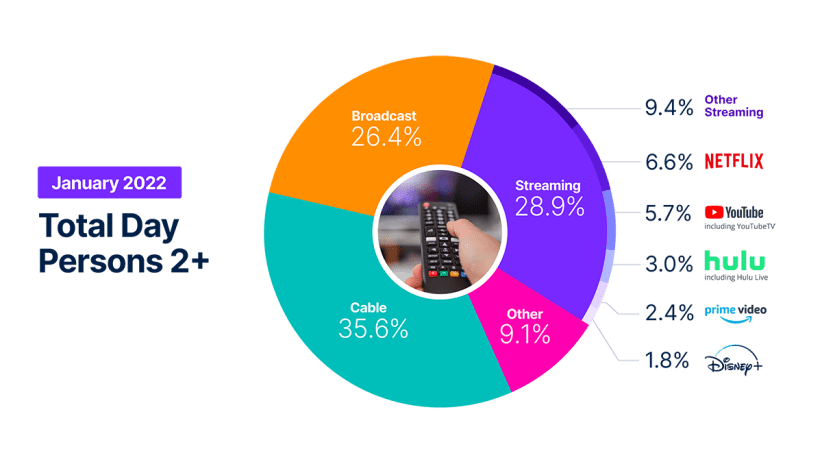Future of TV Briefing: What Discovery-WarnerMedia signals about the streaming wars
By Tim Peterson
The Future of TV Briefing this week looks at how the announced merger of Discovery and WarnerMedia indicates that the streaming wars are now being fought on a bigger scale.
- Streaming’s broadcast era
- Digiday’s Business of TV Forum LIVE
- Cheat Sheet: TV broadcasters’ upfront presentations
- Esports athletes-turned-influencers, shoppable TV, pay-TV providers’ new deal and more
Streaming’s broadcast era
The streaming wars have leveled up with the announced merger of Discovery and WarnerMedia. Major media conglomerates like NBCUniversal and ViacomCBS may have been big enough to compete with the likes of Netflix and Disney domestically, but as the Discovery-WarnerMedia deal indicates, companies may need to be an order of magnitude bigger in order to compete for subscribers around the world.
“If you’re NBCUniversal, if you’re ViacomCBS, all those folks are thinking, ‘Oh my God, how are we going to scale?’” said Eunice Shin, who has consulted for companies including Disney, Warner Bros. and NBCUniversal and is a partner at consulting firm Prophet.
The key hits:
- The Discovery-WarnerMedia merger shows how much ground major streaming services have to make up in order to catch Netflix.
- Companies not only need to establish international streaming footprints but also to afford enough programming to capture audiences worldwide.
- Other companies will need to figure out how to size up, which may lead to more consolidation, though there are limits to more mega-mergers.
Netflix has long been the yardstick against which all other major streaming services are measured. But as Netflix’s subscriber base, original programming library and business continue to grow, its would-be rivals are faced with widening gap to close.
Case in point: On May 13, Disney announced Disney+ had 103.6 million subscribers as of Apr. 3, and the figure was considered a letdown compared to analysts’ estimates that the streamer would have topped 109 million subscribers by then. That’s because Disney+ only added 8.7 million subscribers in the first three months of 2021, a deceleration from the 21.2 million added in the preceding three months. Disney+ may have still attracted twice as many new subscribers as Netflix in the period, but its subscriber base remains half the size of Netflix’s 207.6 million subscribers, which is still growing.
If Disney is facing an uphill climb to keep pace with Netflix, then other traditional entertainment companies are at risk of the competitive curve becoming so steep that they begin to backslide.
Not only does Netflix have a significant head start, having expanded to more than 190 countries, but the company is finally in position to sustain itself. Now that Netflix no longer needs to borrow money to fund its programming budget, its would-be rivals have to figure out how they can invest even more money than the billions of dollars already earmarked for their profit-challenged streaming businesses.
The companies had anticipated this situation, which is why there has been a flurry of consolidation in recent years, from AT&T acquiring WarnerMedia to Viacom and CBS merging. But AT&T’s decision to spin off WarnerMedia and merge it with Discovery suggests they are still not big enough.
The combined …read more
Source:: Digiday





